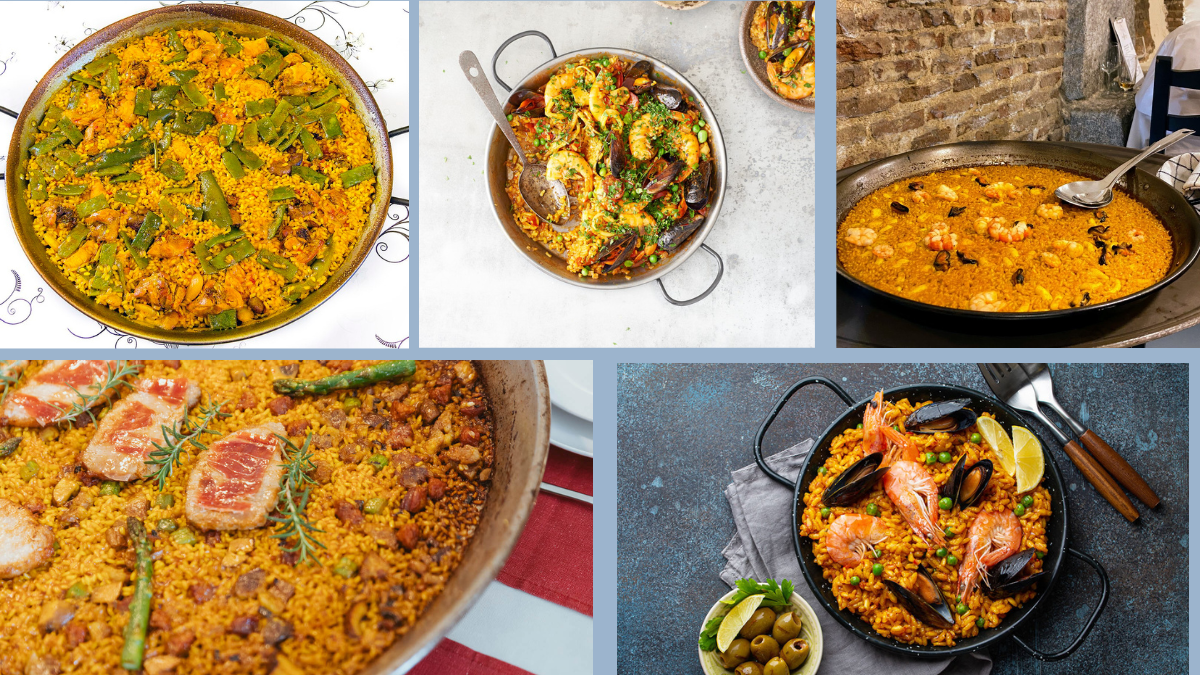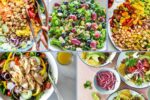Paella — a name that instantly brings to mind the rich aroma of saffron, sizzling olive oil, colorful vegetables, and perfectly cooked rice. It is one of the most iconic dishes in the world, known for its versatility, heritage, and visual appeal. But have you ever wondered:
Which country eats the most paella in the world?
Unsurprisingly, the answer is Spain, the country where paella originated. However, its popularity is not limited to the Iberian Peninsula. From London to Los Angeles, paella — especially vegetarian versions — has become a global phenomenon. In this article, we’ll dive into:
- The origins of paella
- Spain’s love affair with the dish
- Vegetarian variations of paella
- Countries where paella is rapidly gaining popularity
- Cultural significance and cooking traditions
- Health benefits of vegetarian paella
- Fun facts and global trends
Let’s uncover how a humble rice dish became a world culinary treasure.
The Birthplace of Paella: Spain
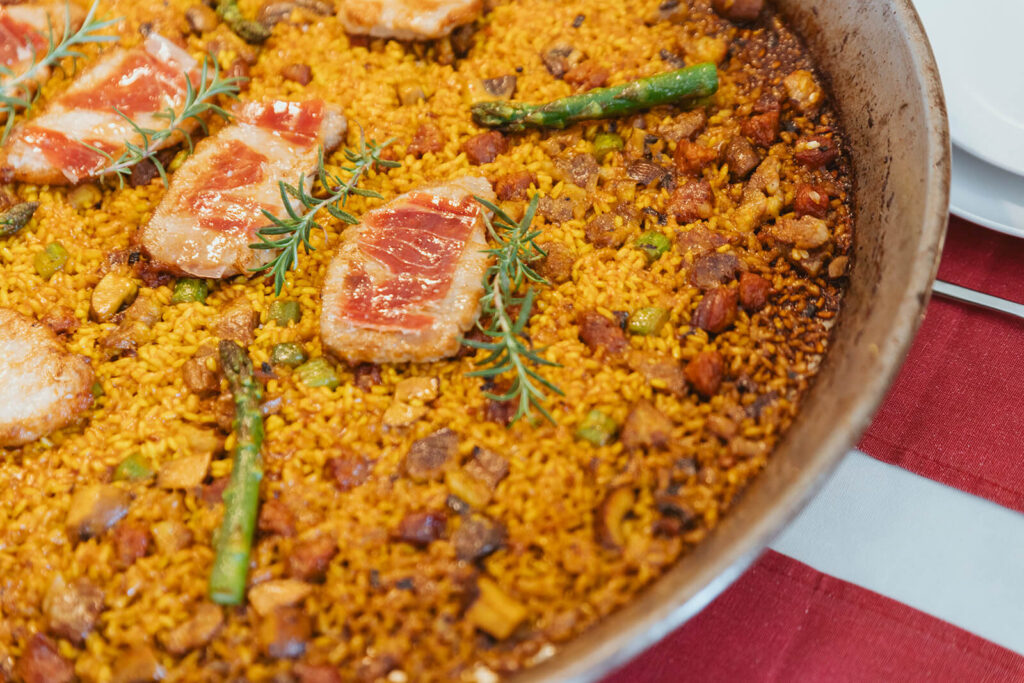
Where It All Began
Paella originated in Valencia, on the eastern coast of Spain. The word “paella” actually comes from the Old Valencian word for frying pan — paelle. Traditionally cooked outdoors over a wood fire, paella was a community meal, where everyone gathered around a large shallow pan to share a hearty, flavorful dish.
While the earliest versions included meat like rabbit and snails, vegetable-based paella has always had a place in Valencian kitchens, especially during Lent and agricultural festivals.
Why Spain Eats the Most Paella
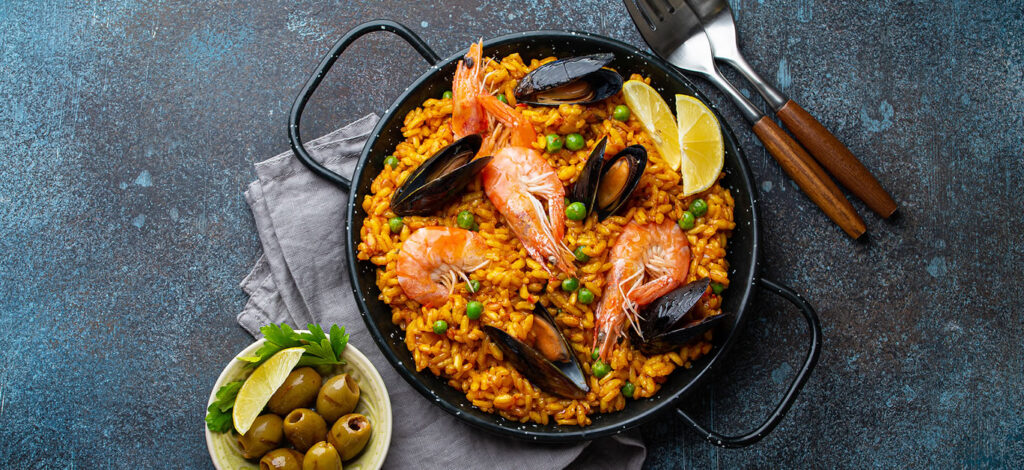
- Cultural Identity: Paella is more than food in Spain — it’s a symbol of regional pride and social bonding.
- Weekly Tradition: Many Spanish families prepare paella every Sunday. In Valencia, this is almost sacred.
- Festivals and Events: Massive paella pans are often cooked during festivals, including the famous Fallas in Valencia.
- Restaurant Menus: Paella is featured prominently in nearly every Spanish restaurant, with vegetarian options growing in popularity.
Spain consumes more paella than any other country, both at home and in public celebrations.
The Rise of Vegetarian Paella
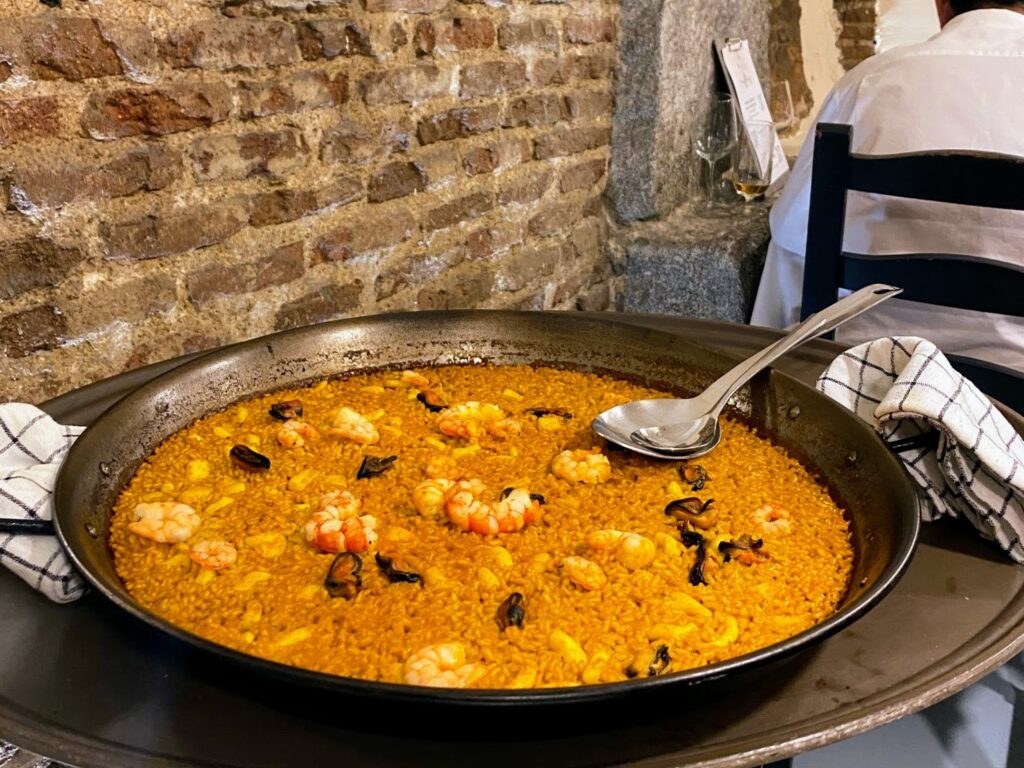
While seafood and meat-based versions are well known, vegetarian paella (paella de verduras) has become a beloved variation — even in Spain. Traditional recipes often include:
- Artichokes
- Green beans
- Tomatoes
- Bell peppers
- Zucchini
- Mushrooms
- Carrots
- Chickpeas
- Saffron, paprika, and olive oil
With rising interest in plant-based diets, vegetarian paella has gone global, embraced by food lovers seeking both flavor and nutrition.
Other Countries That Love Paella
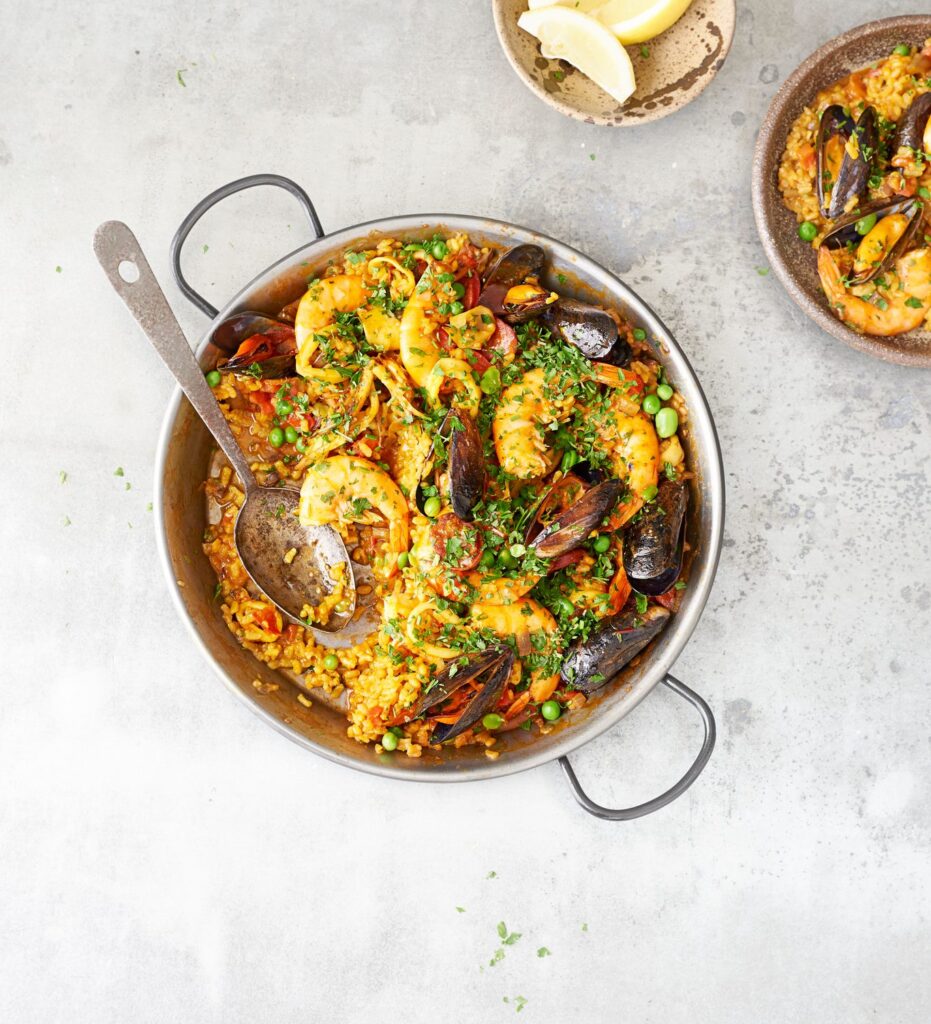
United States
Paella is a hit in cities like New York, Miami, Los Angeles, and San Francisco, where Spanish cuisine is thriving. Many restaurants offer:
- Traditional paella
- Vegan and vegetarian versions
- Paella cooking classes and kits
In California and Florida, farmers’ markets and food festivals often feature veggie paella made with local produce.
United Kingdom
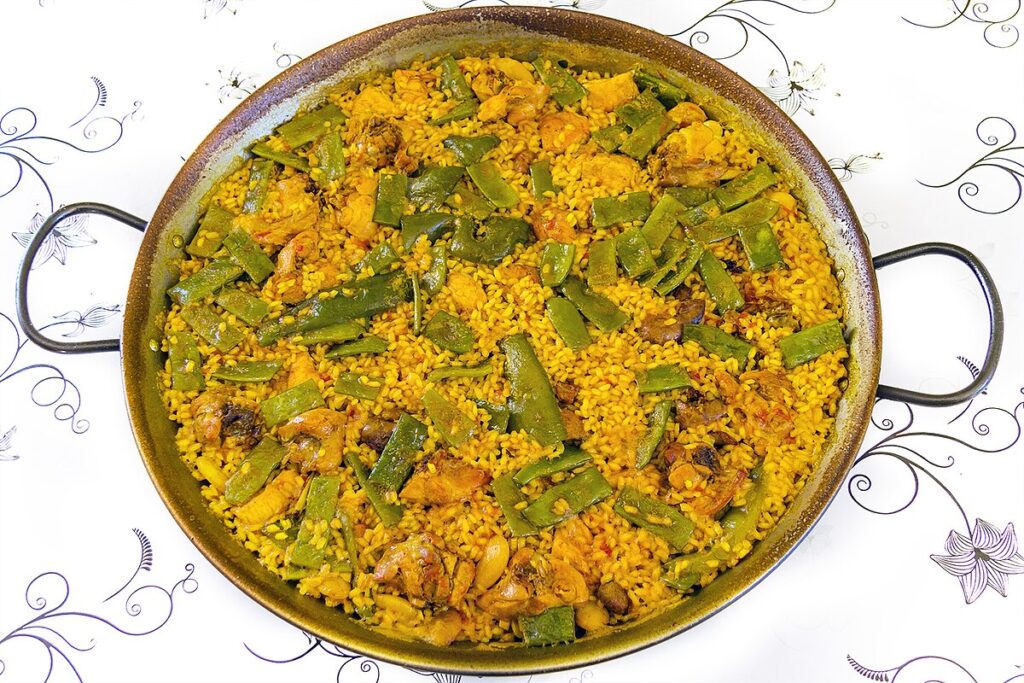
The UK has seen a surge in Spanish food culture over the last decade. Paella is featured in:
- Spanish tapas restaurants
- Street food markets like Borough Market in London
- Home cooking shows and supermarket ready-meals
British vegetarians particularly love mushroom and asparagus paella or paella with artichokes and olives.
🇫🇷ance’s proximity to Spain has made paella popular, especially in southern regions like Provence and Occitanie. French variations sometimes use herbes de Provence and more aromatic broths.
Vegetarian paella is served during summer picnics and weekend gatherings, often paired with local wine.
India
While not a traditional Spanish food market, India’s love for rice dishes like biryani has translated well into an appreciation for paella — especially vegetarian versions.
- Indian chefs often add local spices or ingredients like paneer or green peas.
- Fusion restaurants in cities like Mumbai, Delhi, and Bangalore are putting a desi twist on classic paella.
Australia
In cosmopolitan cities like Sydney and Melbourne, Spanish cuisine is thriving. Australians enjoy experimenting with global flavors, and plant-based paella is a favorite at food and wine festivals.
Common additions include grilled eggplant, pumpkin, and fresh herbs.
What Goes Into a Good Vegetarian Paella?
Rice Matters
Authentic paella is made with short-grain rice, such as Bomba or Calasparra. These varieties absorb broth beautifully without becoming mushy.
Base of Flavor
Most paellas start with a sofrito: a slow-cooked mix of onions, garlic, tomatoes, and bell peppers in olive oil.
Spices & Herbs
- Saffron – For golden color and subtle aroma
- Smoked paprika (pimentón) – Adds depth and earthiness
- Bay leaves, thyme, rosemary – Common in regional versions
Vegetables
A wide variety of fresh vegetables can be used. Traditional vegetarian paella might include:
- Artichoke hearts
- Green beans
- Zucchini
- Roasted red peppers
- Tomatoes
- Broccoli
- Cauliflower
- Chickpeas
Finishing Touch
A squeeze of lemon juice just before serving brings brightness and balances the richness.
Health Benefits of Vegetarian Paella
Vegetarian paella is more than just delicious — it’s also:
- Heart-healthy: Thanks to olive oil and zero cholesterol
- High in fiber: From legumes and vegetables
- Rich in antioxidants: Tomatoes, saffron, peppers, and herbs
- Customizable: Easily adapted for gluten-free, vegan, or low-carb diets
How Paella Is Traditionally Cooked
- Cooked in a wide, shallow pan (the “paellera”)
- Over an open flame or gas burner for even heat
- Without stirring, to allow the formation of the prized “socarrat” — the crispy bottom layer of rice
Vegetarian paella maintains these traditions while adapting ingredients for a meat-free audience.
Global Events & Paella Competitions
- World Paella Day (September 20): Celebrated in Valencia and around the globe
- Concursos de Paella: Paella cooking contests are held internationally, with dedicated categories for vegetarian versions
- Food festivals in cities like New York, Paris, and Tokyo often feature paella cook-offs and tasting booths
Fun Facts About Paella
- The largest paella ever made fed over 100,000 people — cooked in Valencia in a 21-meter-wide pan!
- Traditional paella never includes chorizo — despite popular misconceptions abroad.
- In Spain, paella is typically a lunch dish, not dinner.
- The crispy rice bottom (socarrat) is often considered the best part.
- There’s even a paella emoji !
Conclusion: Spain Reigns, But the World Celebrates
So, which country eats the most paella in the world?
Undoubtedly, Spain holds the crown, with paella deeply embedded in its culture and cuisine. But the rest of the world is quickly catching up — especially with the growing popularity of vegetarian and plant-based versions.
From the bustling markets of Mumbai to trendy cafés in Melbourne and festive celebrations in London, vegetarian paella is becoming a global comfort food — a dish that brings people together with warmth, flavor, and tradition.
Whether you’re a lifelong vegetarian or simply looking to explore plant-based eating, a steaming plate of veggie paella is a satisfying and soulful culinary adventure.
